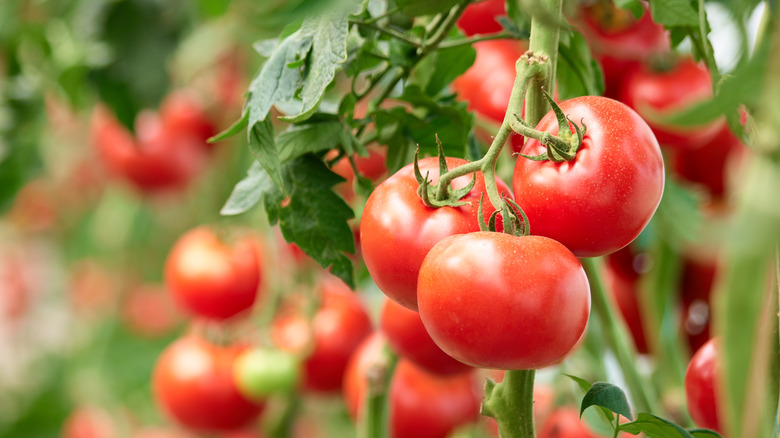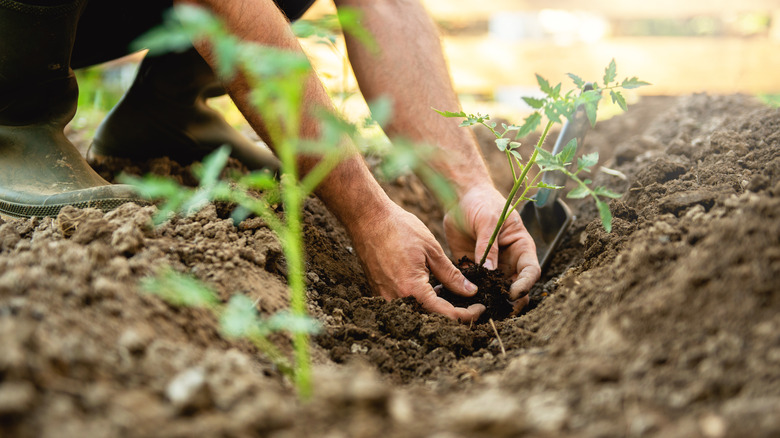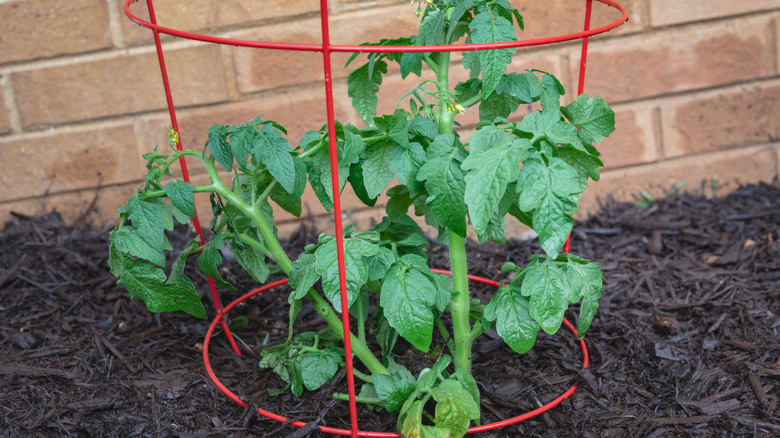How Far Should You Space Out Tomatoes In The Garden?
For tomato addicts, it usually feels like there's never enough space in the garden. We get so excited about growing fresh produce that we want to cram our plots full of as many plants as possible. It's important to remember that the overall layout of your garden will significantly impact the quality and quantity of tomatoes you're able to grow. Unfortunately, more is not always the best. And don't be fooled by the size of the fruit, thinking little tomatoes must come from little plants. Even cherry tomato plants can grow as big as 8 feet tall and 3 feet wide.
An overcrowded garden is likely to generate unhealthy plants because the roots of each one will be forced to compete and steal soil nutrients from its neighbors. Of course, unhealthy plants may not survive the season; even when they do, they yield fewer fruit of lower quality. In that regard, proper spacing becomes a critical aspect of tomato gardening, which means first understanding how large a particular variety will grow.
Time to plant
Grouping young seedlings too close together is one of those mistakes everyone makes when planting tomatoes. They're so delicate when they go into the ground that it's either easy to forget or difficult to visualize just how big they'll be after a few months of growing. Specifically for tomato plants, remember that these vegetables require a lot of nutrients to grow well. On the one hand, that means proper fertilization. Yet another way you can help them out is to ensure they're not at odds with hungry plants that are too close by.
As you lay out your garden, check to see if you have determinate or indeterminate tomatoes because they grow to different sizes. Bushy determinate varieties generally cap out at 3 to 5 feet tall; allow for at least 30 inches of space between each plant along a row and 2 feet between the rows. If you are planting indeterminate tomato varieties, the type that grows continuously and can become quite large and unruly, understand that they'll require even more space and consistent pruning. For indeterminate tomatoes, you may want to space plants as much as 42 inches apart along the row with an additional 6 inches between rows.
Increase spacing for caged indeterminate varieties
Tomato cages can be up to 30 inches wide, so using them as support structures will make it easier to visualize what you'll be in for mid-season. Interestingly, caged tomato plants tend to be healthier because they're lifted off the ground, and their foliage is apt to grow thicker. This is good news because the leaf cover shades the fruit from harsh sun exposure, but it also creates a higher level of humidity that can promote certain diseases. For this reason, the University of California Division of Agriculture and Natural Resources recommends increasing the spacing between caged indeterminate plants to 3 feet to encourage sufficient airflow and to opt for the tallest cages available.
Staking is the other best practice for supporting large tomato plants. Get your stakes into the ground right after transplanting and situate them no more than 4 to 6 inches away from the seedlings. Loosely secure plants to the stakes as they grow taller, aiming for every 10 inches. To keep staked tomatoes to a manageable size, prune them regularly and pinch away suckers (new growth) with your fingers.


